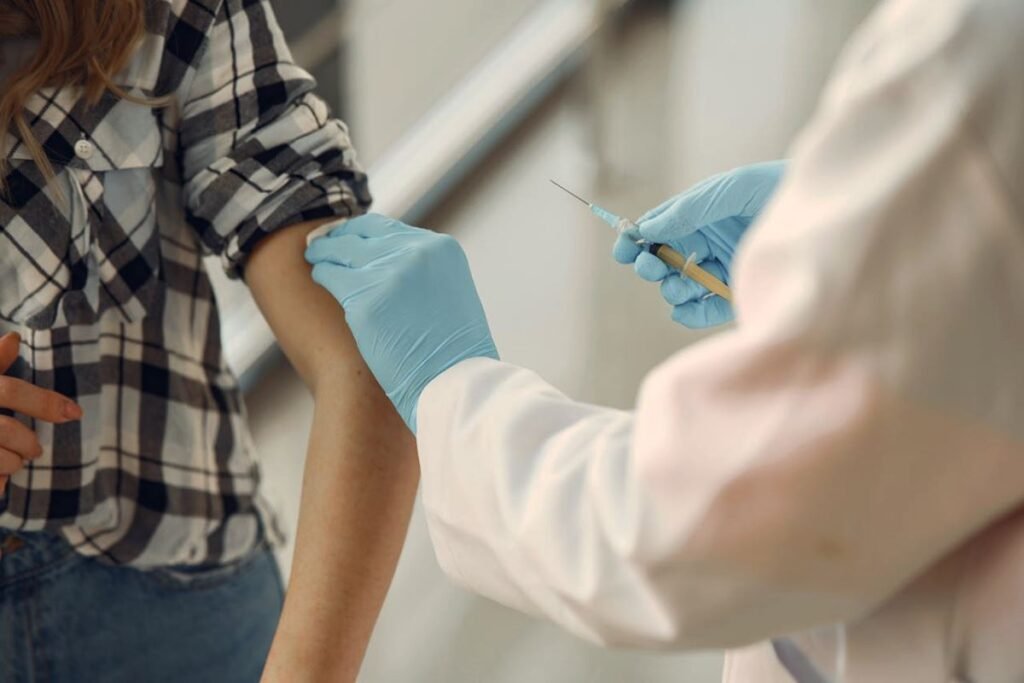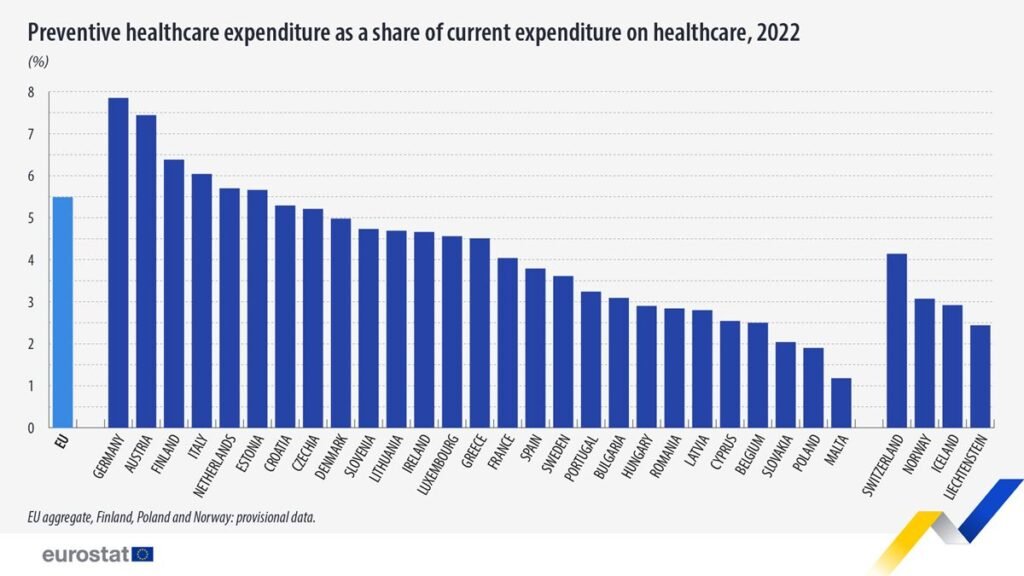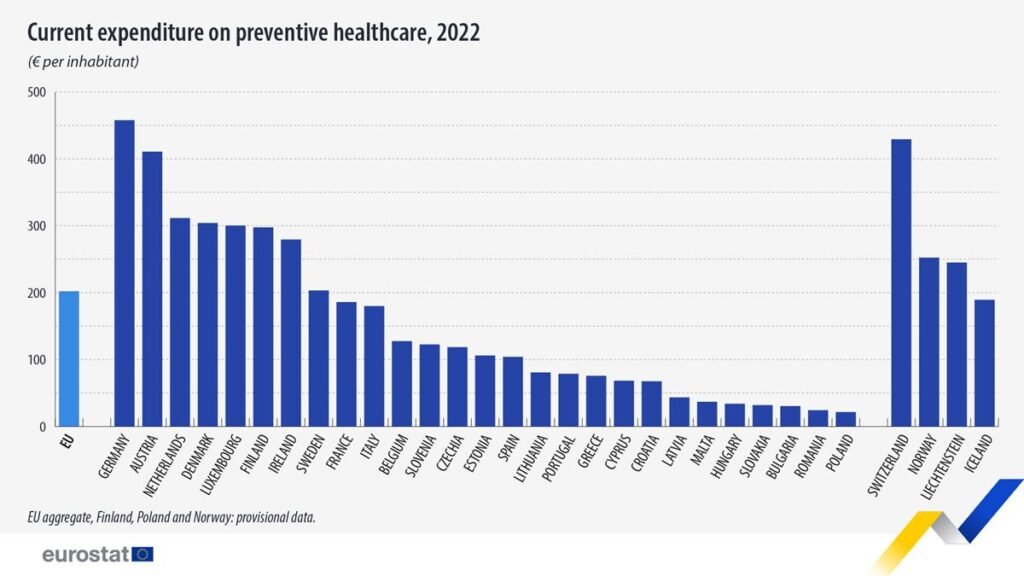Preventive healthcare expenditure in the EU accounted for 5.5 per cent of total healthcare expenditure in 2022, with Germany and Austria recording the highest shares.

The 2022 data was released by the EU’s statistics agency Eurostat on World Cancer Day and reflects the impact of preventive care measures activated to respond to the COVID-19 pandemic, which were still in place in 2022. This meant as a result that spending on preventive healthcare increased from 2.9% in 2019 and 3.5% in 2020 to 6.1% in 2021.
While the highest shares were Germany’s 7.9% of total health expenditure, with Austria at 7.4% and Finland 6.4%, the lowest share was recorded in Malta (1.2%), followed by Poland (1.9%) and Slovakia (2.0%).

Expenditure on preventive care in the EU amounted to €202 per inhabitant, a 6% decrease compared with 2021 (€216 per inhabitant).
Among EU countries, Germany (€458) had the highest preventive care expenditure per inhabitant, followed by Austria (€411) and the Netherlands (€312).
By contrast, Poland (€22), Romania (€24) and Bulgaria (€31) recorded the lowest expenditures.

This article marks World Cancer Day, observed annually on 4 February to raise awareness about cancer and encourage its prevention.
‘Current healthcare expenditure’ quantifies the economic resources dedicated to health functions, excluding capital investment. Healthcare expenditure is primarily concerned with healthcare goods and services that are consumed by people resident in the country, irrespective of where that consumption takes place (it may take place abroad) or who is paying for it. As such, exports of healthcare goods and services (i.e., services provided to non-residents) are excluded, whereas imports of healthcare goods and services for final use are included.
Statistics explained article on preventive health care expenditure, Eurostat






